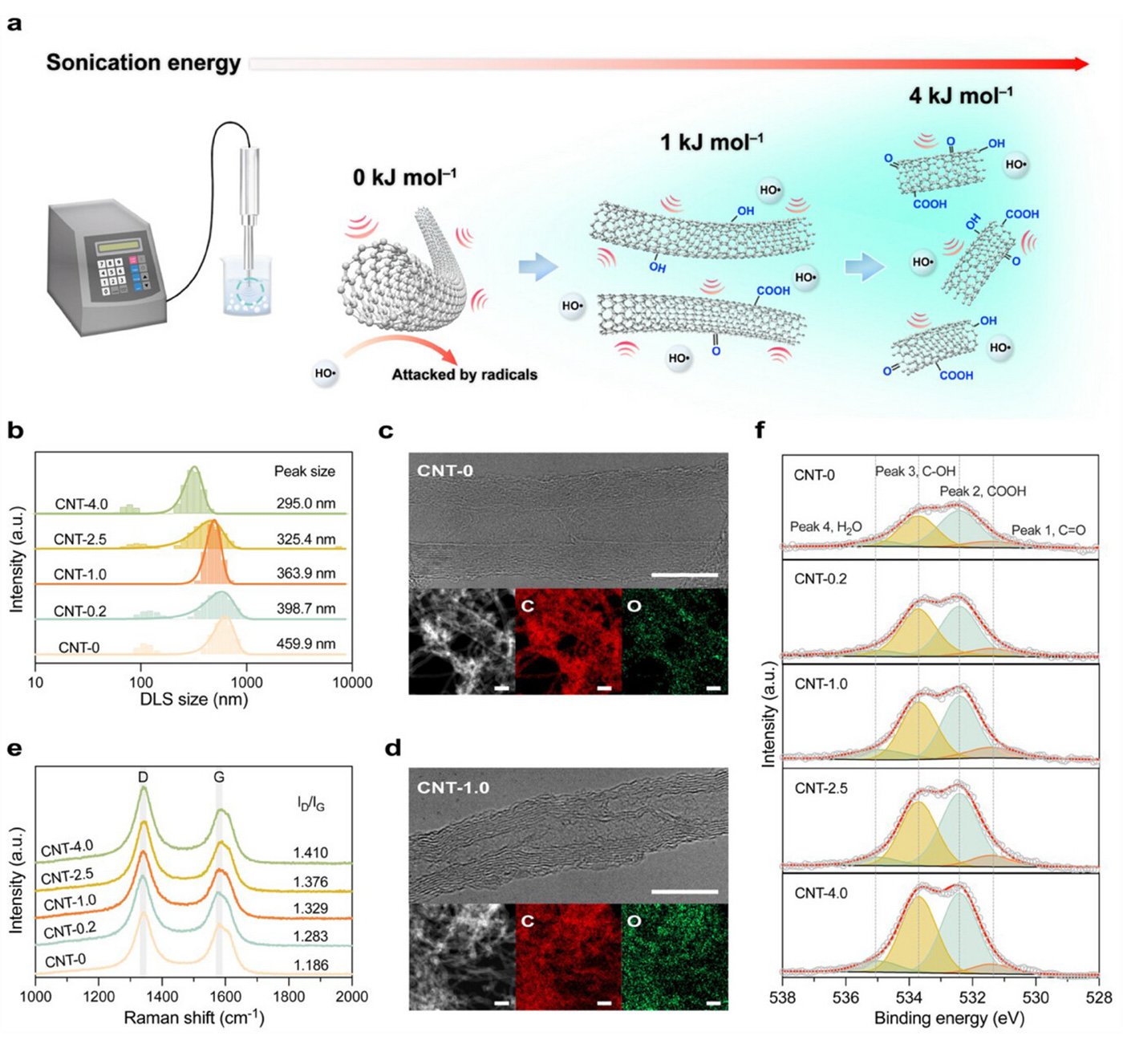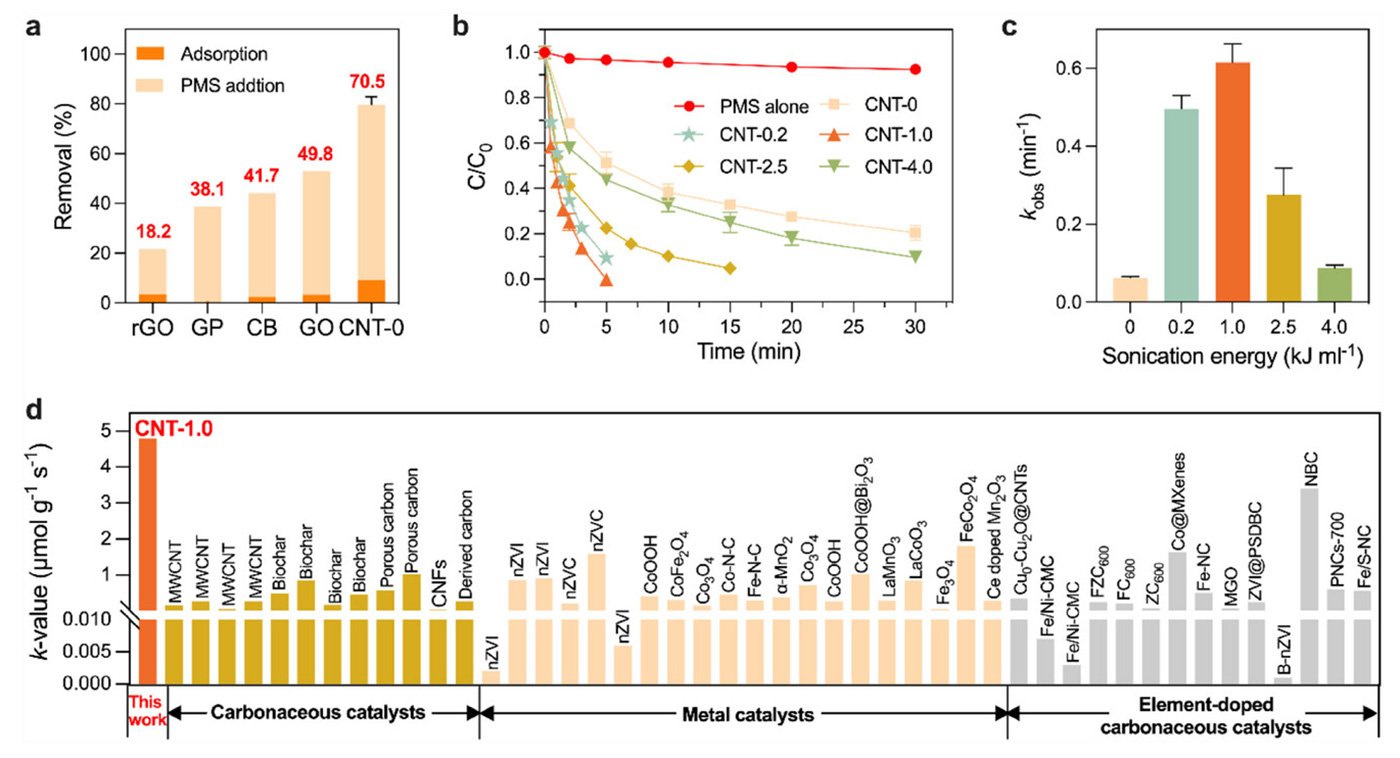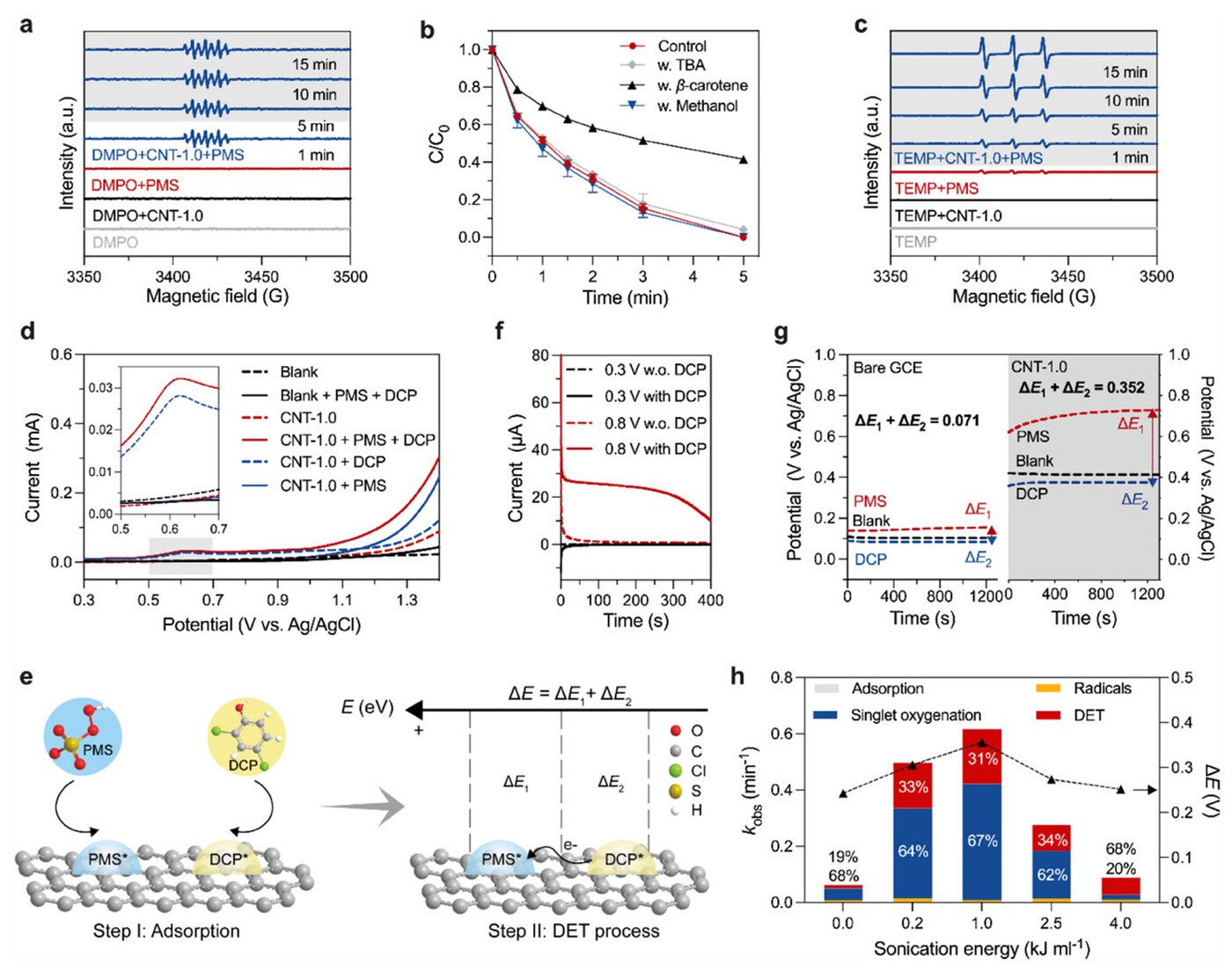Water is one of the most precious resources on the planet. Freshwater is vital for humans, animals, and plants - but it can become contaminated from overflowing stormwater and surface water. We are already starting to feel the squeeze on our tight water supply, so we can't afford to waste a single drop.
Thankfully, contaminated water sources can be rejuvenated again as freshwater via advanced oxidation processes (AOPs). Researchers at Tohoku University made a breakthrough by using sonicated carbon nanotubes (CNTs) to enable a reaction pathway that can pinpoint specific contaminants and break them down to help save our water.
The findings were published in Advanced Materials on May 21, 2025.

"Previously used AOP methods were nonselective, and degraded both pollutants and background water constituents indiscriminately," explains Professor Hao Li of Tohoku University's Advanced Institute for Materials Research (WPI-AIMR). "Our method overcomes this by using a more selective nonradical pathway."
The nonradical pathway uses singlet oxygen and rapid, direct electron transfer. This process allows for common industrial and municipal pollutants to be removed within five minutes, at an unprecedented removal rate (4.80 µmol g−1 s−1). This strategy also works effectively under varied water conditions, such as different pH levels and in the presence of different organic matter.
"Another benefit of our method is that the catalysts produced can be scaled up, they show superior catalytic performance and are easily integrated into flat membranes and hollow fiber devices for continuous water filtration. This makes the technology practical and adaptable for real-world applications," remarks Li.

In addition, centralized treatment plants are expensive and usually require multi-step, complex water treatment processes. The method proposed in this study targets distributed water sources (like stormwater or river water), as an efficient, point-of-use treatment technology. Solid oxidants used in AOPs are easy to store and transport, so they can be brought right to the water source in question.
The next steps of this project will focus on enhancing the long-term stability and anti-fouling performance of the catalysts in real water conditions, expanding their applicability to a broader range of contaminants--particularly electron-deficient organics--and further engineering surface functional groups to improve catalytic activity. This fresh take on freshwater production represents a potentially huge improvement in techniques for replenishing an indispensable resource.
The key data are available in the Digital Catalysis Platform (DigCat), the largest catalysis platform and database developed by the Hao Li Lab.

- Publication Details:
Title: Sonicated Carbon Nanotube Catalysts for Efficient Point-of-use Water Treatment
Authors: Xin Yang, Justin Prabowo, Jiaxiang Chen, Fangxin She, Leo Lai, Fangzhou Liu, Zhechao Hua, Yangyang Wang, Jingyun Fang, Kunli Goh, Di Zhang, Hao Li, Li Wei, and Yuan Chen
Journal: Advanced Materials






